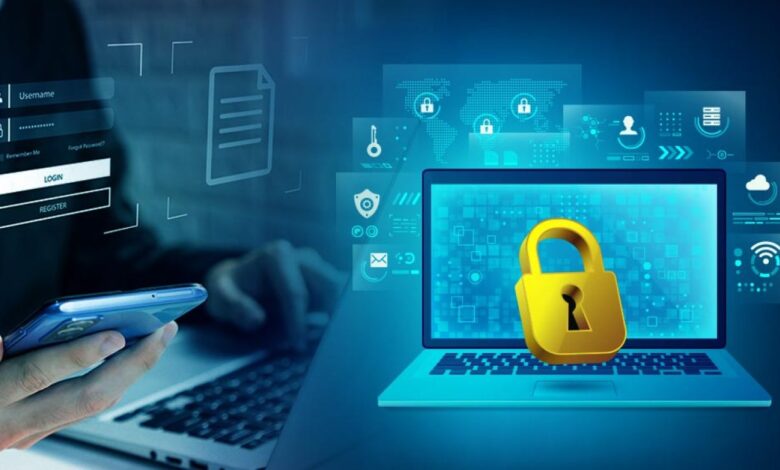The Ultimate Guide to Cybersecurity: How to Keep Your Data Safe

In today’s digital age, data security has become more critical than ever. With the constant advancements in technology, cyber threats continue to evolve, putting our personal and sensitive information at risk. It is imperative that individuals and organizations take proactive measures to protect themselves against cyber attacks.
This comprehensive guide aims to provide you with essential knowledge and practical strategies to enhance your cybersecurity practices. From understanding the fundamentals of cybersecurity to implementing robust defense mechanisms and staying informed about emerging threats, this guide will equip you with the tools and insights necessary to keep your data safe workforce optimization software eleveo.
1. Understanding Cybersecurity: An Introduction
Cybersecurity is like a digital superhero that protects your data from the evil villains of the internet. It involves measures and techniques designed to safeguard your electronic devices, networks, and sensitive information from unauthorized access, theft, and damage.
1.2 Why is Cybersecurity Important?
Think of all the personal and confidential information you store on your devices—banking details, social media accounts, embarrassing selfies. Cybersecurity is crucial because it prevents cybercriminals from getting their greedy little hands on this treasure trove of data. By investing in cybersecurity, you’re not only protecting yourself but also contributing to a safer online world.
1.3 Common Cyber Threats
Cyber threats are the boogeymen of the digital realm, constantly lurking in the shadows. Some of the most common ones include malware, phishing attacks, ransomware, and good old-fashioned hacking. These threats can compromise your personal information, lead to financial loss, or even hold your data hostage until you pay a hefty ransom.
2. Assessing Risk: Identifying Vulnerabilities in Your Data
Before you can build your fortress of cybersecurity, you need to identify the weak spots in your defense. Conducting a risk assessment helps you understand the potential vulnerabilities and measure the potential damage a data breach could cause. It’s like doing a security audit of your digital life.
2.2 Identifying Potential Vulnerabilities
Just like a house with a faulty lock, your data can have vulnerabilities. These could be outdated software, weak passwords, or even your tendency to click on suspicious email attachments. Identifying these vulnerabilities is the first step in securing your digital assets.
2.3 Evaluating the Impact of Data Breaches
Imagine waking up to find all your important files gone or your social media accounts hacked. The impact of a data breach can range from mild inconvenience to downright catastrophic. Evaluating the potential consequences helps you understand the urgency of securing your data and motivates you to take action.
3. Building a Strong Defense: Implementing Effective Security Measures
Just like a flimsy lock invites burglars, a weak password invites cybercriminals to your digital doorstep. By using unique, complex, and hard-to-guess passwords, you add an extra layer of protection to your accounts. Avoid using “123456” or “password” as your password—unless you want to make it easy for hackers to break in.
3.2 Two-Factor Authentication
Two-factor authentication (2FA) is like having a bouncer at the entrance to your online party. It adds an extra step to the login process by requiring a second form of verification, such as a fingerprint or a one-time code sent to your phone. This way, even if someone manages to crack your password, they still need that second verification to gain access.
3.3 Encryption Techniques
Encryption is like putting your data in a fancy, high-tech safe. It scrambles your information into an unreadable format, making it useless to anyone without the decryption key. By encrypting your data, you ensure that even if someone manages to intercept it, they won’t be able to make sense of it.
3.4 Firewalls and Antivirus Software
Think of firewalls and antivirus software as the gatekeepers of your digital kingdom. Firewalls monitor and control incoming and outgoing network traffic, acting as a barrier against unauthorized access. Antivirus software, on the other hand, scans your devices for malicious software (malware) and neutralizes any threats it finds.
4. Staying One Step Ahead: The Importance of Regular Updates and Upgrades
Software and operating system updates are like vaccination shots for your devices—they protect them from newly discovered vulnerabilities. By regularly installing updates, you ensure that your devices have the latest security patches, making it harder for cybercriminals to exploit any weaknesses.
4.2 Patch Management
Patch management is your personal assistant that keeps track of all the updates and patches available for your software and applications. It ensures that you don’t miss any crucial security updates and makes the process of keeping your devices up-to-date a breeze.
4.3 Firmware Updates
Firmware is like the hidden software that lives inside your devices, controlling their functions. Just like software and operating systems, firmware can have vulnerabilities too. By regularly updating your device’s firmware, you close these security gaps and minimize the risk of unauthorized access or control.
Remember, cybersecurity is an ongoing battle. By understanding the basics, identifying vulnerabilities, implementing security measures, and staying up-to-date, you can outsmart the digital villains and keep your data safe and sound. Stay vigilant, my friends!
5. Educating Users: Training and Best Practices for Cybersecurity how2invest.
5.1 Cybersecurity Awareness Training
Let’s face it, most of us are not cybersecurity experts. We’re more inclined to click on cute cat videos than worry about the latest malware lurking on the internet. But as the saying goes, knowledge is power. And when it comes to staying safe online, a little education can go a long way.
Cybersecurity awareness training is like a crash course in all things digital defense. It teaches you how to spot phishing emails, recognize suspicious links, and understand the dangers of sharing personal information online. Think of it as your secret weapon against cyber criminals who are just waiting to pounce on unsuspecting victims.
5.2 Safe Browsing and Email Practices
We all love a good bargain, but not when it comes at the cost of our online security. Safe browsing and email practices are all about being savvy and skeptical. Avoid clicking on sketchy links and downloading files from unknown sources. Remember, that “free” offer might just be a cleverly disguised scam.
And let’s not forget about those pesky emails. Phishing attempts are becoming more sophisticated by the minute. Don’t fall for the old “urgent password reset” trick or the “your package is waiting” scam. When in doubt, always double-check the sender’s email address and think twice before giving away your personal information.
5.3 Phishing and Social Engineering Prevention
Ah, the art of deception. Phishing and social engineering are like the con artists of the cyber world. They trick you into revealing sensitive information or convince you to take harmful actions. But fear not, my friend, for there are ways to protect yourself against these digital charlatans.
Stay vigilant and be skeptical of unsolicited requests for personal information. Avoid clicking on suspicious links, especially if they come from that long-lost relative who suddenly needs your bank account details to claim their inheritance. And remember, your social media profiles are like gold mines for these scammers, so be mindful of what you share online.
6. Responding to Incidents: Developing an Incident Response Plan
Uh-oh, you’ve fallen victim to a cyber attack. Don’t panic! With a well-prepared incident response plan, you can minimize damage and bounce back like a cybersecurity superhero.
6.1 Creating an Incident Response Team
Just like assembling a team of Avengers, you need a group of talented individuals to handle cybersecurity incidents. These experts will be the ones to save the day when your network is under attack. Whether it’s IT professionals, legal advisors, or PR gurus, having the right team in place is crucial to a successful incident response.
6.2 Incident Detection and Reporting
It’s not enough to simply react to cyber incidents; you need to be proactive in detecting and reporting them. Implementing robust monitoring systems and protocols will help you identify potential breaches before they wreak havoc on your data. And once you’ve detected an incident, make sure to report it promptly to the relevant authorities and affected parties.
6.3 Steps to Contain and Recover from a Data Breach
Containment and recovery are like the cleanup crew after a wild party. You need to isolate the affected systems, gather evidence, and start the recovery process. This could involve restoring data from backups, implementing stronger security measures, and patching any vulnerabilities that led to the breach. Learn from your mistakes, improve your defenses, and get back on track.
7. Emerging Threats: Keeping Up with the Latest Cybersecurity Trends
The world of cybersecurity is a fast-paced game of cat and mouse. Just when you think you have it all figured out, new threats emerge to keep you on your toes.
7.1 Understanding New and Evolving Cyber Threats
From ransomware to IoT vulnerabilities, cyber threats are constantly evolving. Stay informed about the latest trends and tactics used by hackers to ensure you’re not caught off guard. Knowledge is power, remember?
7.2 Cybersecurity Industry Updates
The cybersecurity industry is like a constantly evolving organism. New tools, technologies, and best practices are developed to outsmart cyber criminals. Keep an eye on industry updates and take advantage of new solutions to strengthen your defenses.
7.3 Importance of Continued Learning and Professional Development
If you want to be a cybersecurity pro, you can’t afford to sit back and relax. Continuous learning and professional development are essential to stay ahead of the game. Attend conferences, join webinars, and participate in training programs to sharpen your skills and keep up with the ever-changing landscape of cybersecurity.
8. Protecting Personal Devices: Securing Data on Mobile Devices and Home Networks
Your personal devices are like digital treasure chests filled with precious data. From your photos to your financial information, it’s important to keep them locked up tight.
8.1 Mobile Device Security
Our smartphones have become an extension of ourselves, but they’re also a prime target for cyber attacks. Use strong passwords, enable biometric authentication, and install reliable security apps to protect your device from prying eyes. And beware of those suspicious apps disguised as innocent games or productivity tools. They might just be the gateway for hackers to steal your personal information.
Now, let’s turn our attention to home networks.
8.2 Home Network Protection
Your home network is the fortress that safeguards all your devices. Make sure to change the default login credentials on your router, use strong encryption, and keep your firmware updated to fend off potential attacks. And please, don’t leave your Wi-Fi network open for anyone and everyone to connect to. Let’s keep the digital riff-raff out, shall we?
By following these best practices, educating yourself, and staying ahead of the ever-changing cyber threat landscape, you’ll be well-equipped to keep your data safe. So go forth, my friend, and conquer the digital world like the cybersecurity hero you were born to be!
In conclusion, safeguarding our data and ensuring cybersecurity is an ongoing effort that requires constant vigilance and adaptation. By implementing the strategies and best practices outlined in this guide, you can significantly reduce the risk of falling victim to cyber threats. Remember to stay informed about the latest trends, regularly update your systems, educate yourself and your team, and have a solid incident response plan in place. With a proactive mindset and a commitment to cybersecurity, you can protect your valuable data and maintain a secure digital environment for yourself and your organization.
Frequently Asked Questions (FAQ)
1. Why is cybersecurity important?
Cybersecurity is crucial because it helps protect our sensitive data from unauthorized access, theft, and damage. It safeguards personal information, financial details, intellectual property, and confidential business data. Without proper cybersecurity measures, individuals and organizations are susceptible to data breaches, identity theft, financial loss, and reputational damage.
2. What are some common cyber threats?
Common cyber threats include malware, phishing attacks, ransomware, social engineering, DDoS attacks, and insider threats. These threats aim to exploit vulnerabilities in computer systems, networks, and software to gain unauthorized access, steal information, disrupt operations, or hold data hostage for ransom. It is crucial to stay aware of these threats and take proactive steps to defend against them.
3. How often should I update my software and operating systems?
Regular updates are essential to ensure that your software and operating systems remain secure. Software developers frequently release updates to address newly discovered vulnerabilities and patch security loopholes. It is recommended to enable automatic updates whenever possible and check for updates manually on a consistent basis to stay protected against emerging threats.
4. What should I do if I suspect a data breach or cyber attack?
If you suspect a data breach or cyber attack, it is crucial to act quickly. Follow your organization’s incident response plan, which may include isolating affected systems, notifying relevant stakeholders, contacting law enforcement or a cybersecurity incident response team, and initiating recovery measures. It is essential to document and report the incident for further investigation and to prevent future attacks.




